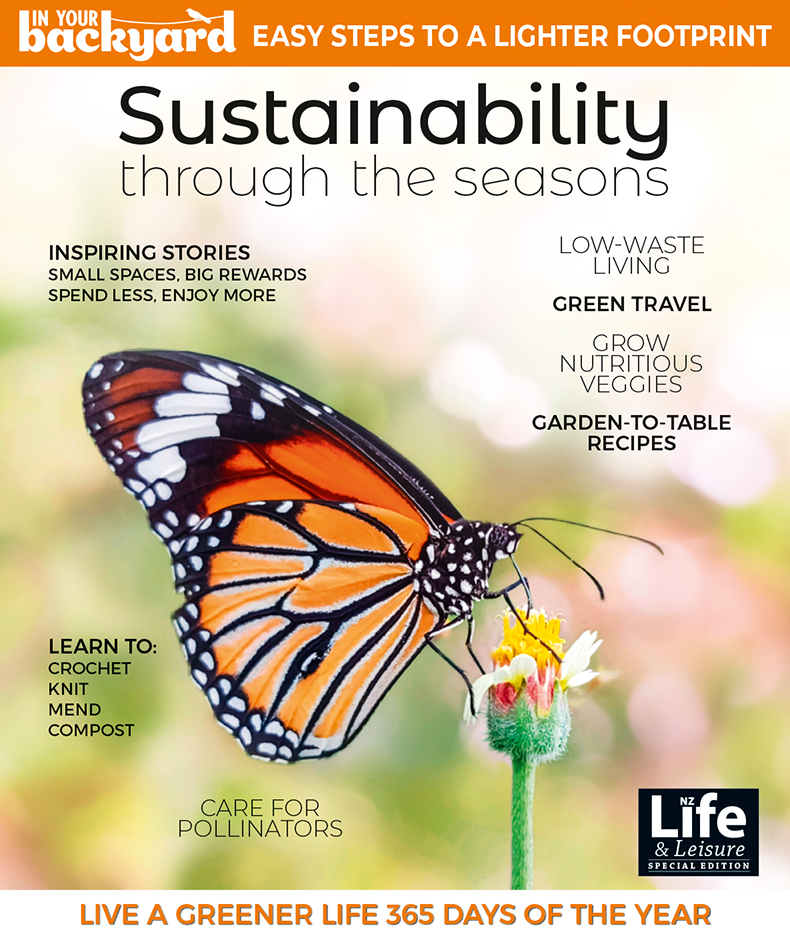How to choose the perfect spot to plant a fruit tree
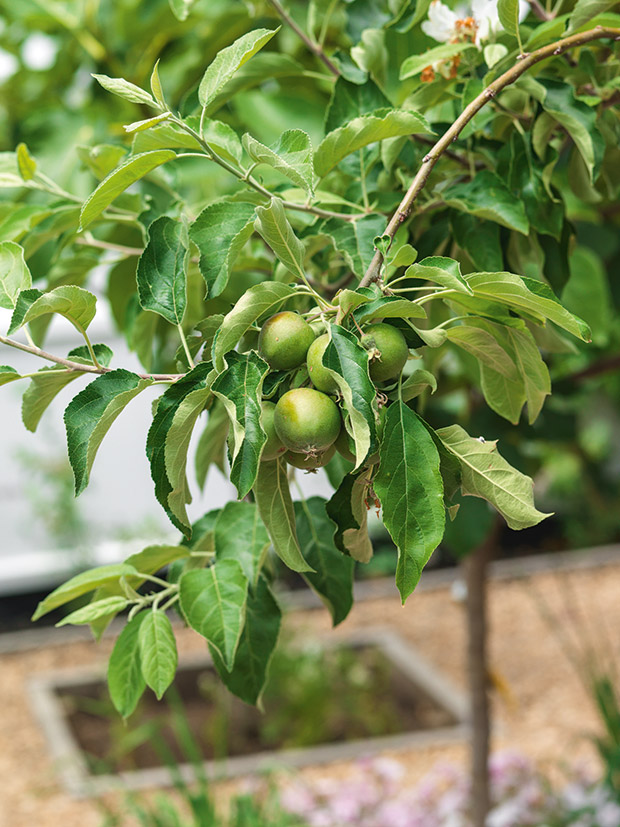
Royal gala apples prefer a sheltered, sunny garden in a temperate climate.
Use data from a basemap to find the best places for fruit trees.
Words: Kath Irvine
Plant subtropicals and citrus (such as tamarillo, passion fruit, avocado, bananas, guavas) with these factors in mind:
• North facing.
• Warm. Use reflected heat from buildings or concrete.
• Free-draining.
• Nourished soil.
• Excellent wind shelter.
• Frost free.
Plant deciduous fruit trees (such as apple, pear, plum, peach, apricot, nectarine, quince, cherry) with these factors in mind:
• A minimum of 10am to 2pm sun.
• Can handle some wind.
• Plum, quince and pear can handle heavy soils.
• Peach, apricot and nectarine must have free-draining soils.
• Peaches and nectarines do better with a little wind.
FEED FOR FRUITS, NOT SHOOTS
Fruit trees need mineral support to produce healthy/good-sized fruits. An annual application replaces what the plant loses when it is harvested. Give them a spring application of gypsum and a fine layer of compost.
If soil is at either end of the spectrum — sandy or clay — also consider a full-spectrum mineral fertilizer. Avoid lots of compost or using manure or sheep pellets — they make trees bigger, inspiring shoots not fruits. Too much water will do this too.
Rely on companion herbs to accumulate and cycle nutrients, groundcovers to hold moisture and nitrogen-fixers for a steady, gentle nitrogen supply.
A monthly biological spray brings tonic support and promotes the beneficial organisms that are the foundation of a healthy garden. Choose from fish, seaweed, neem, comfrey, EM (effective microorganisms) or compost tea.
TREES ON WIRES
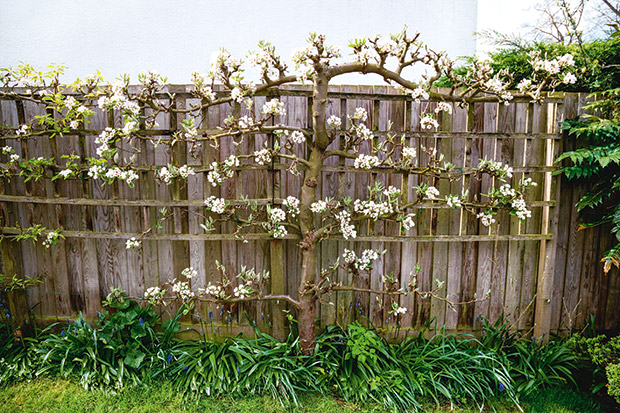
• Need sheltered, north-facing fences or walls.
• Espaliering suits spur-bearing apples, nashis and pears.
• Stonefruits do best fan-trained.
• Grapes, passionfruit and pears do well over an arch.
BAG IT
EverGrow bags are a smart way to make productive fruit trees a reality in small gardens. Restricted root growth makes for smaller tops, channeling the energy into flowers and fruits instead. These small trees produce a lot more fruit relative to size than their free-range cousins. The more restricted a fruit tree, the harder it fruits.
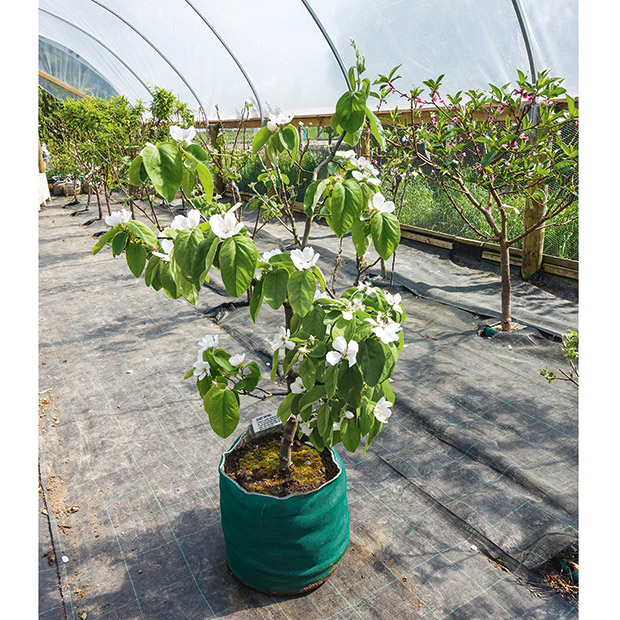
The bags can be buried if the soil is free-draining, otherwise they work well sitting on top of the earth, making them an excellent solution for heavy clay soils. They’ve been designed with drainage in mind — water passes through slowly and evenly. And there’s no need to re-pot; the unique fabric of the bags results in natural root pruning, not root-bound plants.
The bags come in 20, 30 or 40 litres. Any fruit tree or berry will do well in either size, the tops of the tree will end up 10 times the volume of the bag. Choose medium to big rootstocks for stronger trees. Espalier, standard or cordon are all still possible.
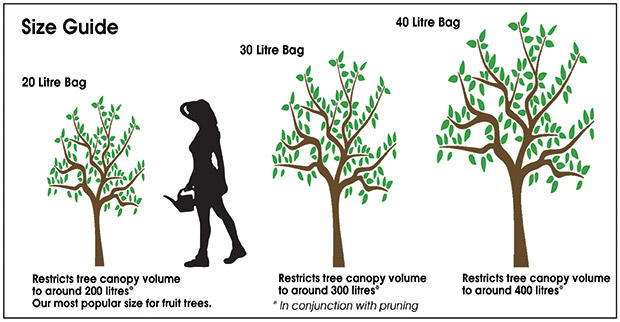
The encouraging thing about EverGrow bags is that small gardens aren’t limited to dwarf trees; give heritage fruit trees a go. Cherries, figs and other potential giants become reachable, and bird-susceptible fruit can easily be covered. They’re ideal for rental properties, too, as the trees are mobile.
After many years of trying every trick in the book to reduce vigour in my much beloved but over-zealous monty’s surprise apple, I may finally have my answer. evergroworchard.nz
KATH’S SEVEN FAVOURITE FRUIT TREES
For a fruit tree to be on my list of favourites, it has to tick three boxes. Delicious. Hardy. Reliable.
1. Captain kidd apple medium-sized, crisp fruit with red streaky skin
2. Seckle pear also called the honey pear — small, juicy fruits that taste like honey and spice
3. Hosui nashi a crisp, delicious nashi with unusual russet skin
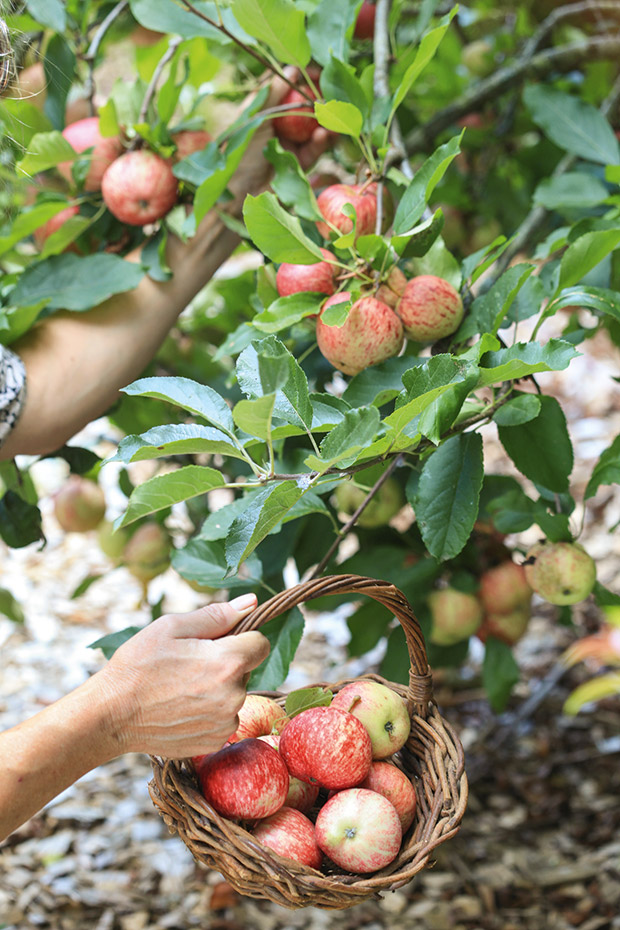
Captain kidd apple.
4. Fitzroy apricot a consistent cropper of sweet juicy fruit. Self-fertile and fine for North Island gardeners as it’ll produce without a winter chill
5. Hawera plum a self-fertile, freestone plum with dark red skin and flesh
6. Wiggins peach an early, white-fleshed, freestone peach that’s full of flavour and juice
7. Black fig a sweet, tasty, dark-skinned fig that’s perfect for cooler places
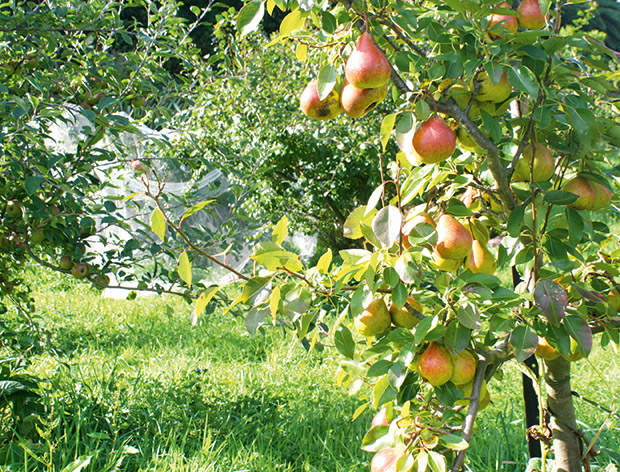
Seckle pear.
COOL CLIMATE CITRUS
Citrus are subtropical at heart. In cold regions of the country seek advice from a local garden centre.
Meyer lemons head the list as the most cold-hardy citrus, followed by golden special grapefruit, satsuma mandarins and tangelos. Yen ben and lemonade lemons, navel oranges and persian limes will survive minor frosts once established.
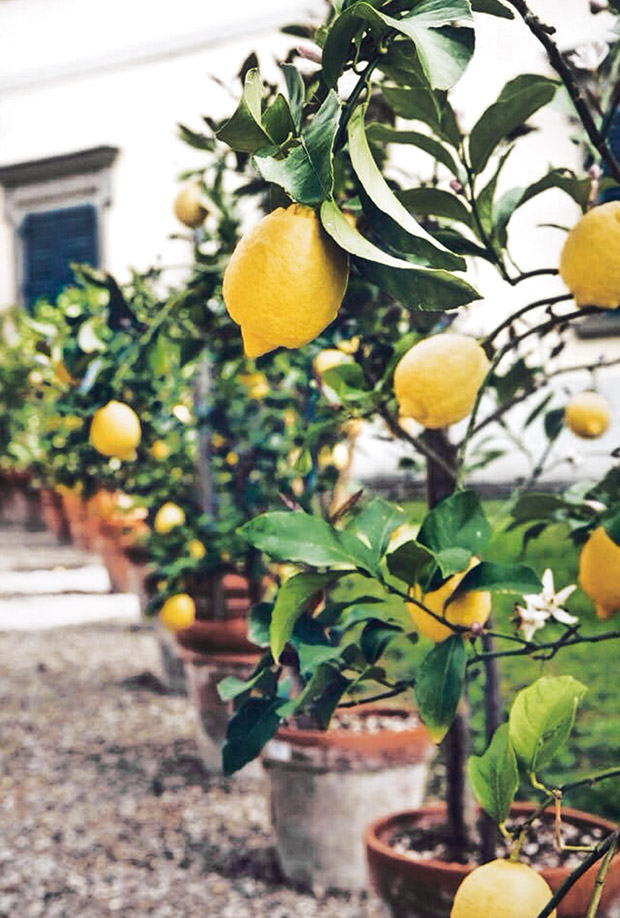
Tuck citrus trees into north-facing spots that are out of the wind. Free-draining, well-nourished soil is essential. Big pots are a great alternative if soil is poorly drained.
Cover young trees with frost cloth in late autumn to late spring, and boost by priming the soil from spring through summer. The larger the canopy when the cold hits, the higher the chances of survival.
Tip: Look for trees marked as having hardy trifoliata (includes flying dragon) rootstock — small, tough and productive.
Read more stories like these in our latest special edition, Sustainability Through the Seasons.
